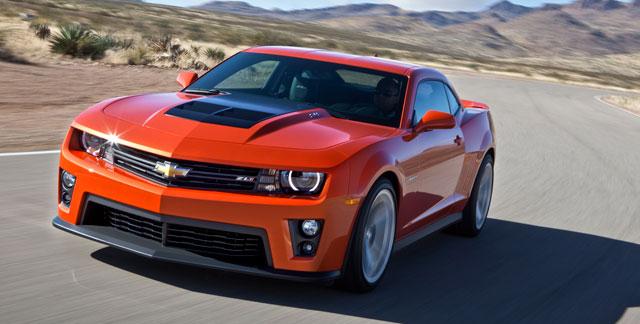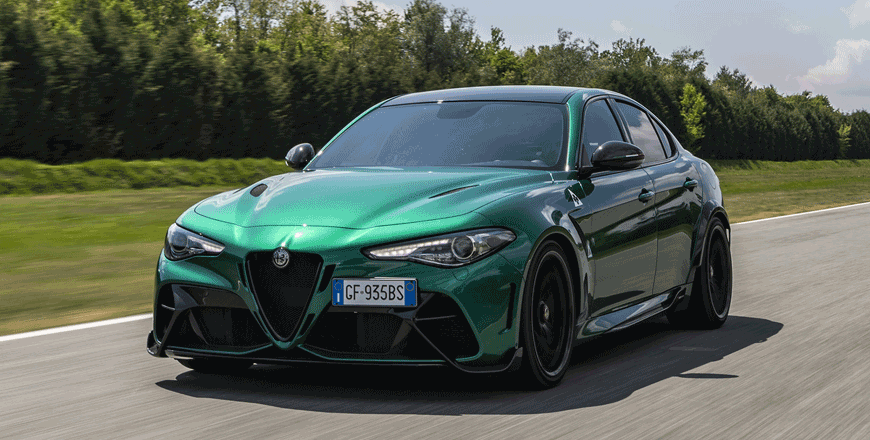You are here
Quick and composed
By Ghaith Madadha - Jan 05,2015 - Last updated at Jan 05,2015

The most muscular iteration of Chevrolet’s highly stylised retro-futuristic Camaro muscle car, the ZL1 is a high performance bargain with brutish power and performance.
More than just a simple point-and-squirt straight-line rocket, the Camaro ZL1 knows how to put power down through corners and in 2011 posted an impressive 7:41.27 lap time on the German Nurburgring Nordschleife circuit.
Engineered by General Motors’ Australian Holden wing, styled by Korean-born designer Sang Yup Lee and built in Canada, the mildly re-styled 580BHP Camaro ZL1 is a defining modern American muscle car. However, since late-2014 it has an even more thuggish foe to contend with in the form of the 707BHP Dodge Challenger SRT Hellcat.
Hunkered down and muscular
Quintessentially American in character, the Camaro ZL1’s sharp design pays homage to the classic original 1960s Camaro, and is anything but subtle in its sense of presence and aesthetic sensibility. Brazenly aggressive, with long snouty bonnet, wide body and rakishly low roofline, the Camaro has an uncomplicated sense of appeal.
With sharply defined lines, ridges, pinched hips and muscular haunches, combined with heavily browed face with deeply recessed lights and grille, the Camaro strikes an even more menacing stance with the more muscular ZL1 version’s bigger and lower bumper and air intakes, and more defined bonnet bulge necessary for the taller supercharged engine sitting somewhat far in the bay for balanced weight distribution.
Receiving only the single – rather than two-piece a side – rear light segment of an otherwise Camaro-wide facelift, the ZL1 soldiers on with an un-revised front-end, required for its unique ground effects and cooling airflow management, rather than receiving a bespoke new front fascia.
With front air splitter, wide engine and brake cooling ducts, special underbody covers, side skirts, front tyre deflectors and prominent bonnet vents, the ZL1 develops 29kg down-force to keep it pinned down at 241km/h, compared to the outgoing Camaro SS version’s 90kg lift.
Meanwhile, enormously wide low profile 285/35ZR20 front and 305/35ZR20 rear tyres work hard to effectively putting down the ZL1’s immense reservoir of torque and power onto the road.
Volcanic V8
Mechanically unaltered, the rear-drive ZL1’s glorious 6.2-litre supercharged is a bluntly effective contemporary take on a traditional American formula.
A burbling, cross-plane 16-valve OHV V8 with deep bass growls and intense top-end bellows underlayed with supercharger whine, the ZL1’s compact lightweight aluminium LSA engine eschews racy dry sump lubrication for a deeper wet sump and high capacity oil pump for consistent oil circulation through high lateral g-force corners.
Rear-driven through six-speed automatic gearbox, the ZL1’s liquid-cooled heavy-duty limited-slip rear-differential distributes power to the driven wheel with best traction.
Quick and smooth in automatic and sequential modes, the ZL1 would have however been an even more visceral and involving experience in six-speed manual gearbox specification, rather than the tested automatic.
Developing 580BHP at 6000rpm and 556lb/ft at 4200rpm, brawny ZL1 launches vigorously off-the-line, as its irresistibly brutal torque battles with a vigilant traction and stability control system. The result is a brilliant compromise of wheelspin, traction and forward motion, and with driver firmly pinned back in Recaro sports seat, the ZL1 blasts through the 0-100km/h benchmark in 4-seconds and onto a 290km/h potential top speed.
With a mechanically-driven supercharger provides instant and progressive boost, the ZL1 provides off-the-line immediacy and freight train confidence through its muscular mid-range. Progressively and muscularly rising from languidly effortless tick-over to jack-hammer intensity at full chat in a seamless sweep through the rev range, the ZL1 delivers full-spectrum confidence.
Magnetic appeal
Built on GM’s Holden-developed Zeta platform with multi-link independent suspension on all corners, the Camaro ZL1 uses also features adaptive magnetic dampers to take the edge off its huge alloy wheels and low profile tyres firm ride. Automatically firm up for flat body control through corners, the ZL1’s magnetic dampers also loosen up over imperfect roads for more pliancy.
Riding smooth and firm — but not punishingly so — the ZL1’s ground affect airflow solutions and big footprint feels reassuring planted and stable at speed.
Given its weight and performance, the ZL1 employs a highly effective Brembo brake system, with huge 370mm front and 365mm rear ventilated discs and six-piston front and four-piston rear callipers.
With sticky tyres pushed out to corners, the ZL1 delivers high grip levels, but given its immense reservoir of torque, one can easily un-stick the rear wheels — deliberately or not. It is more effective to dial in power smoothly through a corner’s apex to exit onto a straight with brutal pace and sure-footed poise, with its limited-slip differential putting power down as best as it can be used.
To reduce parasitic power loss and improve efficiency the ZL1 uses variable ratio and effort electric steering, and with its long bonnet, one tucks in seemingly early but tidily into corners. However a heavier, non-variable or traditional hydraulic system might offer greater fluency, feel and intuitiveness.
Hunkered down
A compellingly powerful, composed and quick muscle car edging close to near-supercar performance, the ZL1 well handles its huge near 1.9-tonne weight through corners and rides with a smoothly firm consistency that is settled over rebounds from cracks and dips. However, the best advice for tall and wide drivers (over 188cm) is that they should avoid the sunroof option.
With its hunkered down roof, small glasshouse, long bonnet and big dramatic haunches, the Camaro doesn’t offer the best visibility or most generous headroom, but without a sunroof it manages just fine, and especially with the much-appreciated reversing camera. However, the tested car’s optional sunroof’s reduced headspace compromised effective visibility and ergonomics.
Ergonomically, the optional sunroof reduces side headroom, with tall drivers sometimes leaning to the centre of the cabin for the extra room directly under the sunroof, but with the steering wheel is angled slightly away from the centre – for crash safety – means that one’s right arm is close and left arm far from the ZL1’s flat-bottom multi-control steering wheel.
Additionally, the ZL1’s four auxiliary gauges are welcome, but are positioned somewhat low in the centre console. Moody and swathed with suede-like material, the ZL1’s moody black cabin features squared-off retro-style instruments, head’s-up windscreen display, a USB and Bluetooth-enabled infotainment system, rear child seat latches and a 320-litre boot.
TECHNICAL SPECIFICATIONS
Engine: 6.2-litre, all-aluminium, supercharged in-line V8-cylinders
Bore x Stroke: 103.25 x 92mm
Compression ratio: 9.1:1
Valve-train: 16-valve, OHV
Gearbox: 6-speed automatic, rear-wheel-drive, limited-slip differential
Gear ratios: 1st 4.03:1; 2nd 2.36:1; 3rd 1.53:1; 4th 1.15:1; 5th 0.85:1; 6th 0.67:1
Reverse/final drive: 3.06:1/3.23:1
Power, BHP (PS) [kW]: 580 (587) [432] @ 6,000rpm
Specific power: 95.2PS/litre
Power-to-weight: 311.9PS/ton
Torque lb/ft (Nm): 556 (754) @ 4,200rpm
Specific torque: 122.6Nm/litre
Torque-to-weight: 400.6Nm/ton
Redline: 6,200rpm
0-100km/h: 4-seconds
Top speed: 290km/h
Fuel consumption, city/highway/combined: 18.1-/11.2-/15-litres/100km
Fuel capacity: 71.9-litres
Length: 4,841mm
Width: 1,918mm
Height: 1,376mm
Wheelbase: 2,852mm
Track: 1,618mm
Kerb weight: 1,882kg
Weight distribution, F/R: 52 per cent/48 per cent
Headroom, F/R: 950/897mm
Legroom, F/R: 1,077/757mm
Shoulder room, F/R: 1,444/1,080mm
Cargo volume: 320-litres
Steering: Variable ratio /effort, electric-assisted rack & pinion
Turning circle: 11.5-metres
Lock-to-lock: 2.5-turns
Suspension: Multi-link, anti-roll bars, adaptive magnetic dampers
Brakes, F/R: Ventilated discs 370 x 32mm/365 x 28mm
Callipers, F/R: 6-/4-pistons
Tyres, F/R: 285/35ZR20/305/35ZR20
Related Articles
Among the most evocative and honest of all car segments with its emphasis on undiluted thrills, aggressive designs, feelgood flavours and vi
Combining class and convenience with desirability, driving dynamics and devastating performance, the compact super saloon is a traditionally
Introduced in 2015 as part of a revised Dodge Challenger coupe line-up, the SRT 392 is an evolution of the model line’s previous high perfor

















